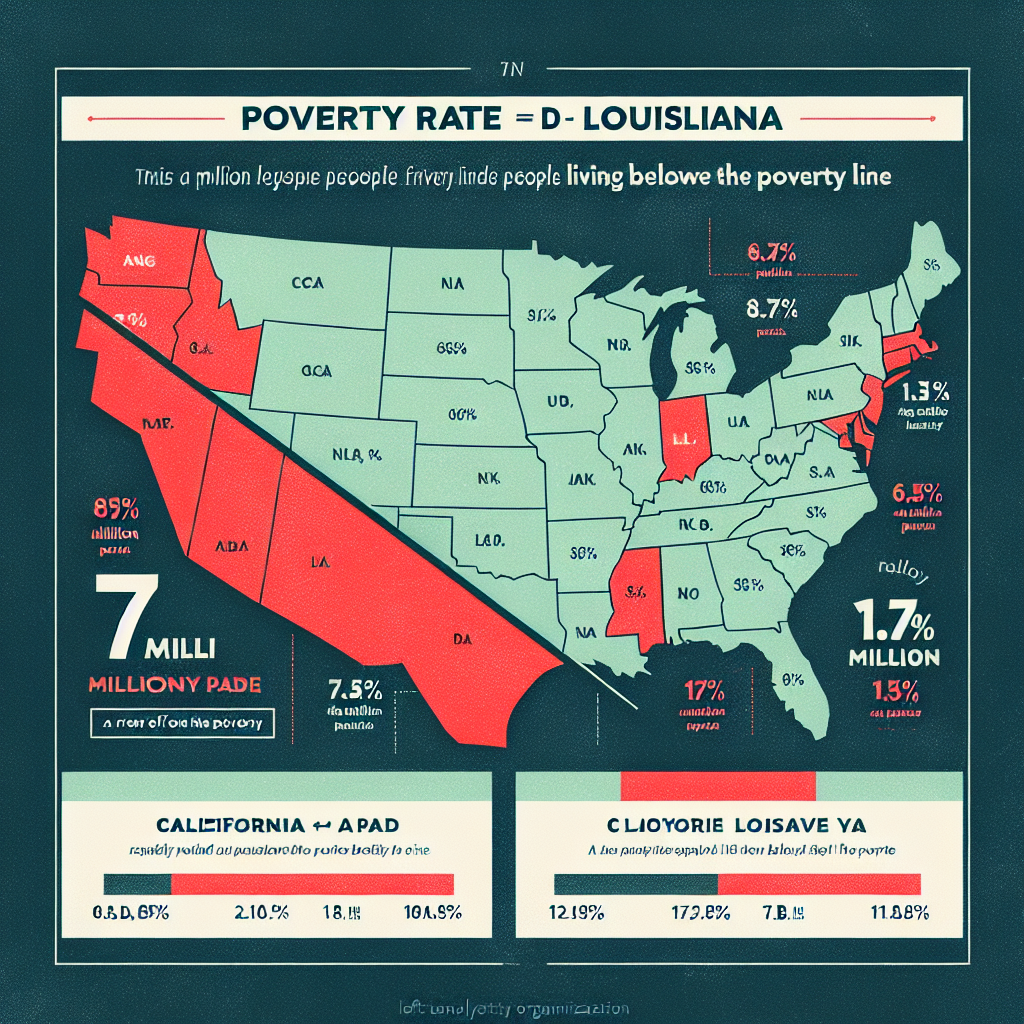California and Louisiana tied for the highest poverty rate in the United States last year, with 7 million people (about 17.7% of the population) living below the adjusted poverty line.
This data comes from a report released this month by the left-leaning think tank California Budget and Policy Center based in Sacramento. The Center analyzed data from the U.S. Census Bureau using a supplementary indicator that considers local living costs, family size, and medical expenses.
The analysis shows that California’s poverty rate of 17.7% remained the same as the previous year but is still significantly higher than the national average of about 13%. Louisiana also reached a poverty rate of 17.7%, but the two states face different economic pressures: California primarily suffers from skyrocketing urban housing prices, while Louisiana struggles with rural job shortages.
The report links California’s high poverty rate to the end of pandemic-era assistance. In 2021, expanded child tax credits, increased food aid, and eviction protections temporarily lowered California’s poverty rate to 11%, reaching a historical low. As these programs expired, poverty levels in California have sharply risen across the nation, with the report indicating this to be the largest increase in over fifty years.
Housing is considered a critical factor in California. The poverty rate for renters stands at 27.1%, while for homeowners, it is only 11.1%.
In many areas of California, low-income families spend more than a third of their income on rent. According to data from the real estate platform Zillow, the median rent in major cities exceeds $2,000 per month, making it challenging for many families to afford basic expenses.
“Some people choose to leave, some share housing, and some barely get by,” said Joel Kotkin, a urban researcher at Chapman University in Orange County. “In the worst cases, they end up homeless.”
During an interview with a news outlet, Kotkin stated, “They have to accept this way of life, knowing that their quality of life depends largely on the level of government services.”
Certain groups are hit harder by poverty. The poverty rate for children and the elderly exceeds 20%. The percentage of African American and Latino residents facing poverty is about 10 points higher than that of White residents.
Experts point out that high housing costs, wage disparities, and the lack of affordable childcare services collectively drive poverty.
Kotkin also mentioned other factors: “High taxes drive away high-income individuals and entrepreneurs. Additionally, burdensome regulations are a factor for developers. Essentially, it’s not worth it.”
The severity of poverty varies by region. Coastal cities like Los Angeles and San Francisco struggle due to high costs of living, while inland areas such as the Central Valley face challenges due to limited agricultural and trucking job opportunities.
Despite employment growth in the technology and entertainment industries, many positions in California do not offer salaries sufficient to cover living expenses, according to data from job site Dice.
This indicates that California is no longer attracting population migration from other states. “I don’t think you’ll see immigrants or families coming from Ohio to California anymore, and this is crucial for California’s development, especially for those with children,” Kotkin remarked.
Other states with high poverty rates in the U.S. include New Mexico and Oregon, while states with low poverty rates such as New Hampshire have rates below 8%.
The report warns that without new policies, California’s poverty rate could further deteriorate, especially if the federal government reduces health and nutrition programs.
The California government has passed laws to expedite affordable housing construction, but Kotkin believes that it is the state government’s policies that are exacerbating the issue.
Speaking about California’s “radical” housing policies, Kotkin said, “The situation could be worse, with lower output, because the homes built under policy pushes are essentially ones that people don’t want and can’t afford.”

